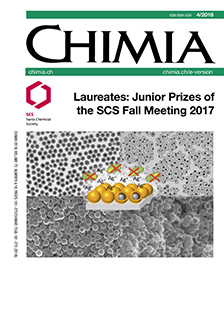Photoelectron Photoion Coincidence Spectroscopy to Unveil Reaction Mechanisms by Isomer-selective Detection of Elusive Molecules: From Combustion to Catalysis
DOI:
https://doi.org/10.2533/chimia.2018.227Keywords:
Photoelectron spectroscopy, Pyrolysis, Reaction mechanism, Reactive intermediates, Vacuum ultraviolet synchrotron radiationAbstract
Elusive and reactive intermediates, such as radicals, play a central role in reaction mechanisms. Photoelectron photoion coincidence spectroscopy with tunable vacuum ultraviolet synchrotron radiation offers a multiplexed, sensitive, mass- and isomer-selective way to identify and, in some cases, determine mole fractions of reactive species. It thus helps to unveil the missing link(s) between reactants and products. After a brief overview of the technique, we review two systems in three different reactive environments. First, the unimolecular decomposition mechanism of ortho-xylyl radicals is revealed in pyrolysis experiments. Second, the insights gained are used to analyze a fuel-rich meta-xylene flame, which suggests that important xylyl isomerization reactions are currently missing in combustion models. Third, photoion mass-selected threshold photoelectron spectra identify the fulvenone ketene as the crucial intermediate in the catalytic fast pyrolysis of a lignin model compound and help map heterogeneous catalysis mechanisms.Downloads
Published
2018-04-25
Issue
Section
Scientific Articles
License
Copyright (c) 2018 Swiss Chemical Society

This work is licensed under a Creative Commons Attribution-NonCommercial 4.0 International License.
How to Cite
[1]
Chimia 2018, 72, 227, DOI: 10.2533/chimia.2018.227.







